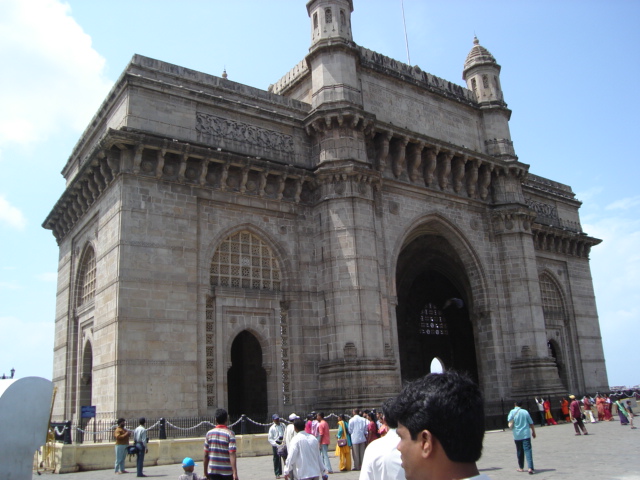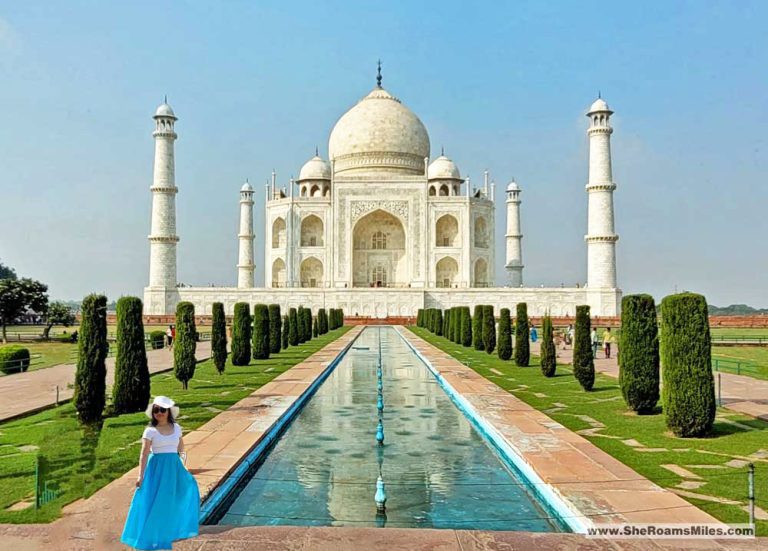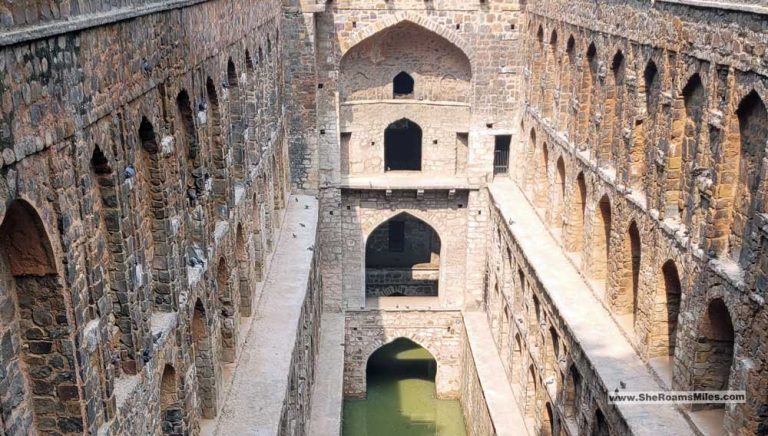Stepwells in India | Famous Baoli in Delhi
Agrasen Ki Baoli is one of Delhi’s most interesting landmarks, showcasing stepwells in India using ancient water management systems. Located near Connaught Place, this stepwell offers a rare look at Delhi’s history. Here’s what you need to know before visiting.
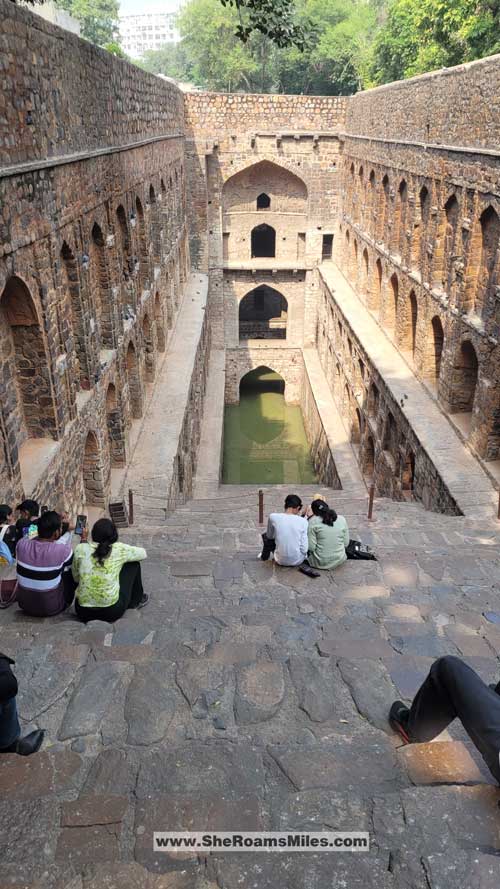
What is a Stepwell?
A stepwell, or “baoli,” is a structure with steps that lead down to a water source. These were built in dry areas to ensure access to water. Agrasen Ki Baoli is one of the most famous stepwells in India.
History of Agrasen Ki Baoli
Agrasen Ki Baoli is believed to have been built by Maharaja Agrasen, a legendary king. Some sources suggest it was constructed in the 14th century, while others say it was rebuilt by the Agrawal community in the 16th century. The baoli once served as a crucial water source for Delhi’s residents.
Where to Stay in Delhi
Delhi offers various accommodations to suit different preferences and budgets. Below you can find my picks for where to stay in New Delhi.
- Luxury: The Leela Palace New Delhi
- Mid-range: The LaLiT New Delhi
- Budget: Saltstayz Le Icon
Architecture of Agrasen Ki Baoli
The baoli features three levels, with 108 steps leading down to the water. It’s a combination of Persian and Indian architectural styles, with arches, carvings, and geometric patterns. The scale of the structure and the design are remarkable, offering visitors a step back in time.
When I first saw the stepwell, I was struck by the sheer scale of it. The steps descend deep into the ground, and the stone walls rise up in a pattern that almost feels like a secret passageway into another time. It felt like I had stepped into a movie set — the kind where you expect to find a treasure hidden beneath the ground. Looking down, I felt so high up in the steps at street level.
The Play of Light and Shadows
The baoli is especially beautiful in the morning or late afternoon. As the sun filters through the structure, it creates striking patterns on the stone steps, perfect for photography or simply enjoying the quiet atmosphere.
Visiting Agrasen Ki Baoli: Key Information
Location and How to Get There
Agrasen Ki Baoli is located on Hailey Road, a short walk from Connaught Place. The nearest metro station is Janpath, just 10 minutes away on foot. You can also reach it by rickshaw from Connaught Place.
Best Time to Visit
The ideal times to visit are early mornings or late afternoons when the crowds are smaller and the light is better for photos. Weekdays are less crowded than weekends, making for a more peaceful visit.
Entry Fee and Timing
Agrasen Ki Baoli is free to visit and open every day from sunrise to sunset. This makes it an easy stop for visitors to explore without any restrictions.
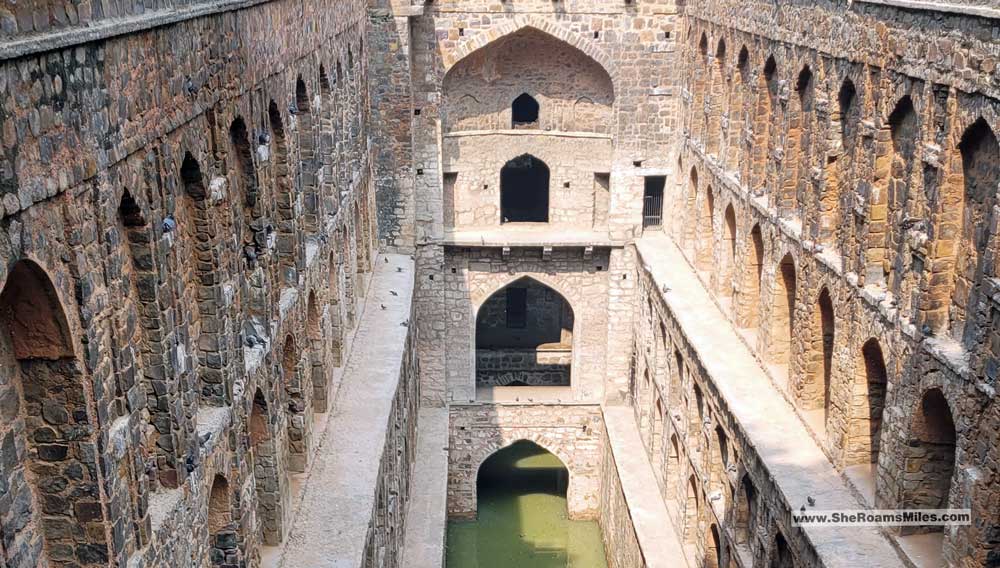
Why Agrasen Ki Baoli Should Be on Your Itinerary
Agrasen Ki Baoli offers a break from the noise of Delhi. Its peaceful atmosphere provides a quiet place to relax while also offering a glimpse into the city’s past. The stepwell’s design reflects the ancient water management methods used in Delhi.
Stepwells were not just functional; they were community spaces. Agrasen Ki Baoli is a reminder of Delhi’s heritage and its reliance on these structures for water in the past.
Stepwells like Agrasen Ki Baoli are a testament to the water management techniques of ancient India. These structures were vital in ensuring the availability of water, especially in arid climates. Agrasen Ki Baoli, in particular, was designed to provide water for both the local population and travelers passing through Delhi.
But beyond their practical purposes, stepwells were also integral to social and cultural life. They were often places for social gatherings, rituals, and even festivals. Although the baoli no longer serves as a water source today, it still holds cultural significance as a historical monument that links modern Delhi with its ancient roots.
Nearby Attractions
If you’re in the area, there are other nearby sites worth visiting. Jantar Mantar, an astronomical observatory, and India Gate, a war memorial, are both close by. After visiting the baoli, you can explore Connaught Place for a meal or some shopping.
Personal Reflections: A Quiet Moment in the City
Agrasen Ki Baoli is a quiet retreat from Delhi’s busy streets. When I first visited, I didn’t expect much, but the peacefulness of the place struck me. It’s a reminder that sometimes the most memorable experiences come from unexpected places.
Agrasen Ki Baoli is a popular tourist attraction and has appeared in Bollywood films, including the blockbuster “PK” starring Aamir Khan. Today, it is a hangout or hideout place for people in the city seeking seclusion and quiet.
Is Agrasen Ki Baoli Haunted?
The waters in the stepwell looked like dark green, silty and mossy. Some local legends claim the dark water of the baoli has supernatural powers. Though there’s no evidence of this, it adds to the intrigue of the site.
Conclusion: Your Next Stop in Delhi
Agrasen Ki Baoli is a must-see for anyone visiting Delhi. Its history, architecture, and peaceful setting make it one of the city’s hidden gems. Whether you’re interested in architecture, history, or simply looking for a quiet spot, this stepwell is worth a visit.
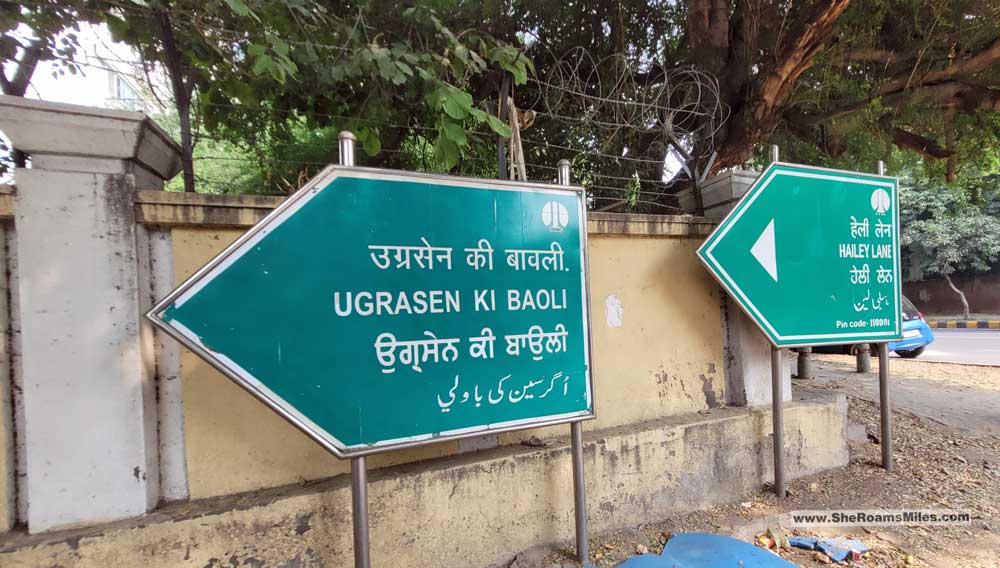
For more about India, please see these guides:
- 19 Best Things to Do in India | Ultimate 2 Days Itinerary
- 10 Epic Things To Do In Delhi India
- 9 Unmissable Things To Do In Agra | Perfect 1 Day Itinerary
- Taj Mahal Private Tour from Delhi by Car
- Famous Baoli in Delhi | Exploring Agrasen Ki Baoli
- Stepwells In Delhi | A Fascinating Ancient Water Conservation Technique
- Things to do in Mumbai | My unforgettable first trip to India
- Flying from Mumbai to Agra via Jaipur
- All Other Destinations

